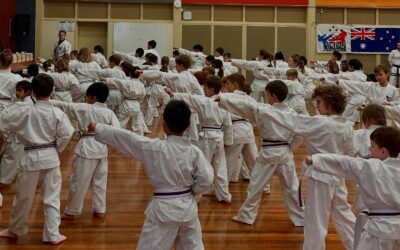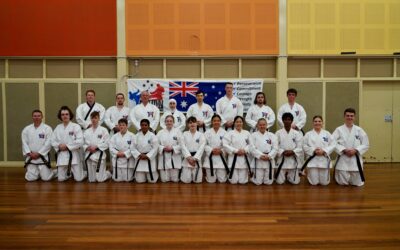A Brief History
Origins of Hapkido
The martial arts have always been an important part of human history. Whether it was used for self-defence or as a form of entertainment, the art of fighting has been around for centuries. One such martial art that has gained immense popularity over the years is Hapkido. This Korean martial art has its roots in ancient fighting techniques and has evolved into a highly sophisticated system of self-defence.
In this article, we will take a deep dive into the history of Hapkido. We will explore its origins, its’ evolution, and the techniques that make it a formidable martial art.
Table of Contents
The Beginnings of Hapkido
Hapkido has its roots in ancient Korean fighting techniques. However, the modern form of Hapkido that we know today was developed by a man named Choi Yong-Sool. Choi was born in 1904 in what is now North Korea. He was adopted by a Japanese man at a young age and was taken to Japan, where he learned the art of Daito-ryu Aiki-jujutsu.
In 1939, Choi returned to Korea and began teaching his own version of the martial art. He called his system Hapkido, which means “the way of coordinating energy.” Choi’s system was heavily influenced by his training in Japan, but he also incorporated elements of traditional Korean martial arts.
Evolution of Hapkido
In the early days, Hapkido was a relatively unknown martial art. It wasn’t until the 1960s and 1970s that Hapkido gained popularity outside of Korea. This was largely due to the efforts of a man named Ji Han-Jae. Ji was one of Choi’s top students and helped to spread Hapkido throughout Korea and eventually to other parts of the world.
Over time, Hapkido continued to evolve and change. Today, there are several different styles of Hapkido, each with its own unique techniques and principles. Some of the most popular styles include:
- Traditional Hapkido: This style focuses on joint locks, throws, and pressure points. It emphasises the use of circular movements to redirect an opponent’s force.
- Combat Hapkido: This style is more focused on self-defence and real-world situations. It includes techniques such as strikes, kicks, and grappling.
- Hwa Rang Do Hapkido: This style is a combination of Hapkido and other Korean martial arts. It emphasises the use of acrobatic kicks and strikes.
Techniques of Hapkido
One of the defining features of Hapkido is its use of joint locks and throws. These techniques are designed to immobilise an opponent and render them powerless. Hapkido also includes strikes, kicks, and pressure points, which can be used to quickly incapacitate an attacker.
Some of the most common techniques used in Hapkido include:
- Joint locks: These are techniques that involve manipulating an opponent’s joints in such a way that they cannot move. Common joint locks include wrist locks, elbow locks, and shoulder locks.
- Throws: Throws are techniques that involve using an opponent’s momentum against them to throw them to the ground. Common throws include hip throws, shoulder throws, and leg sweeps.
- Strikes: Strikes are techniques that involve using your fists or feet to hit an opponent. Common strikes used in Hapkido include punches, palm strikes, and kicks.
- Pressure points: These are areas of the body that, when struck, can cause immense pain and temporarily immobilise an opponent. Hapkido practitioners learn to target specific pressure points to quickly incapacitate an attacker.
In addition to these techniques, Hapkido also includes training in falling and rolling. This is important for both defensive and offensive purposes, as a skilled practitioner can use their falling and rolling skills to avoid attacks and counterattack effectively.
Training in Hapkido
Training in Hapkido can vary depending on the style and the instructor. However, there are some common elements that you can expect to encounter during Hapkido training.
- Warm-up exercises: These are designed to prepare the body for the physical demands of training. Warm-up exercises may include stretching, jumping jacks, and running.
- Basic techniques: These are the building blocks of Hapkido. Basic techniques include strikes, kicks, and blocks.
- Forms: Forms, also known as hyung, are prearranged sequences of movements that simulate a real fight. Forms help students to develop coordination, balance, and timing.
- Partner drills: Partner drills are exercises that involve working with a partner. These drills may include joint locks, throws, and pressure point techniques.
- Sparring: Sparring is a form of controlled fighting that allows students to practice their techniques in a realistic setting. Sparring may be done with protective gear, such as gloves and helmets.
Training in Hapkido requires discipline, dedication, and hard work. It is not a martial art that can be mastered overnight, but with consistent practice, students can become skilled practitioners.
Conclusion
The history of Hapkido is a fascinating one, and its techniques have evolved over time to become a highly effective form of self-defence. With its emphasis on joint locks, throws, and pressure points, Hapkido offers a unique set of techniques that can be used in a variety of situations.




